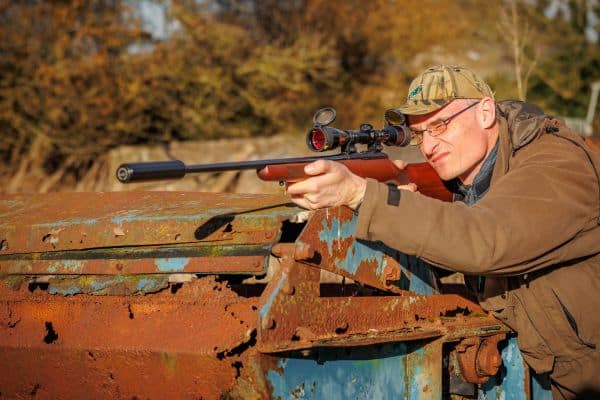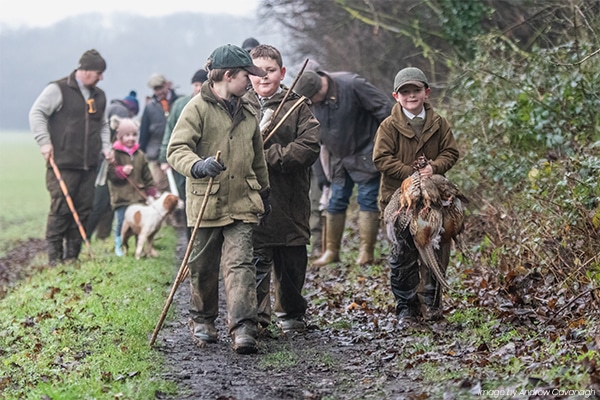
Calibres, cartridges and quarry: advice for firearms enquiry officers
An overview of different calibres and ammunition commonly used in the UK, alongside a summary of their appropriateness for different quarry species.
Get information on the legal shooting season for mammals and birds in the UK.
Apply for funding for your project or make a donation today
Comprehensive information and advice from our specialist firearms team.
Everything you need to know about shotgun, rifle and airgun ammunition.
Find our up-to-date information, advice and links to government resources.
Everything you need to know on firearms law and licensing.
All the latest news and advice on general licences and how they affect you.


The information on this page covers the legitimate importation of knives from outside the UK. We don’t cover here the laws on carriage and use of knives in the UK, such as when in a public place, which can be found here.
Importing a knife from abroad is not an offence nor does it require prior import licensing. You may order knives (folding or fixed blade) from abroad so long as they are not offensive weapons.
Anybody who “sells or hires or offers for sale or hire, exposes or has in his possession for the purpose of sale or hire, or lends or gives to any other person”, an offensive weapon shall be guilty of an offence.
A list of items declared as offensive weapons by the Offensive Weapons Act 1996 may be found at the end of this page.
A lock knife is a knife with a blade that folds into the handle, is manually opened and locks in place.
Lock knives are not prohibited weapons. They are routinely sought for hunting and fishing as they are designed to be folded away when not in use, which is both safe and practical for the owner. However, some lock knives are capable of being opened by centrifugal force.
Under the Restriction of Offensive Weapons Act 1959; anybody who manufactures, sells or hires or offers for sale or hire, or exposes or has in his possession for the purpose of sale or hire or lends or gives to any other person any knife which has a blade which is released from the handle or sheath thereof by the force of gravity or the application of centrifugal force and which, when released, is locked in place by means of a button, spring, lever, or other device, sometimes known as a “gravity knife” is guilty of an offence.
Lock knives are typically designed so that the blade has a resistance that only enables them to be opened by hand, this is UK law compliant. Lock knives that open on application of gravitational or centrifugal force will be viewed as a ‘gravity knife’ by the UK Border Agency. Importation of these knives is prohibited; once such a knife is detected it will be seized and destroyed.
BASC advises caution when ordering. For example, some companies may make their knives with pivot bearings which allow easy opening. Additionally, a genuine lock knife’s retaining screws and pins may become loose in transit, thus allowing the blade to be extended by centrifugal or gravitational force.
Should a knife arrive in the UK and be determined as a gravity knife, prosecution should only take place if the importer was found to be knowingly importing the knife and attempting to evade the prohibition.
a) a knuckleduster, that is, a band of metal or other hard material worn on one or more fingers, and designed to cause injury, and any weapon incorporating a knuckleduster;
b) a swordstick, that is, a hollow walking-stick or cane containing a blade which may be used as a sword;
c) the weapon sometimes known as a “handclaw”, being a band of metal or other hard material from which a number of sharp spikes protrude, and worn around the hand;
d) the weapon sometimes known as a “belt buckle knife”, being a buckle which incorporates or conceals a knife;
e) the weapon sometimes known as a “push dagger”, being a knife the handle of which fits within a clenched fist and the blade of which protrudes from between two fingers;
f) the weapon sometimes known as a “hollow kubotan” , being a cylindrical container containing a number of sharp spikes;
g) the weapon sometimes known as a “footclaw”, being a bar of metal or other hard material from which a number of sharp spikes protrude, and worn strapped to the foot;
h) the weapon sometimes known as a “shuriken”, “shaken” or “death star”, being a hard non-flexible plate having three or more sharp radiating points and designed to be thrown;
i) the weapon sometimes known as a “balisong” or “butterfly knife”, being a blade enclosed by its handle, which is designed to split down the middle, without the operation of a spring or other mechanical means, to reveal the blade;
j) the weapon sometimes known as a “telescopic truncheon”, being a truncheon which extends automatically by hand pressure applied to a button, spring or other device in or attached to its handle;
k) the weapon sometimes known as a “blowpipe” or “blow gun”, being a hollow tube out of which hard pellets or darts are shot by the use of breath;
l) the weapon sometimes known as a “kusari gama”, being a length of rope, cord, wire or chain fastened at one end to a sickle;
m) the weapon sometimes known as a “kyoketsu shoge”, being a length of rope, cord, wire or chain fastened at one end to a hooked knife;
n) the weapon sometimes known as a “manrikigusari” or “kusari”, being a length of rope, cord, wire or chain fastened at each end to a hard weight or hand grip;
o) a disguised knife, that is any knife which has a concealed blade or concealed sharp point and is designed to appear to be an everyday object of a kind commonly carried on the person or in a handbag, briefcase, or other hand luggage (such as a comb, brush, writing instrument, cigarette lighter, key, lipstick or telephone).
p) a stealth knife, that is a knife or spike, which has a blade, or sharp point, made from a material that is not readily detectable by apparatus used for detecting metal and which is not designed for domestic use or for use in the processing, preparation or consumption of food or as a toy;
q) a straight, side-handled or friction-lock truncheon (sometimes known as a baton).
r) a sword with a curved blade of 50cm or more in length; and for the purposes of this sub-paragraph, the length of the blade shall be the straight line distance from the top of the handle to the tip of the blade.
Got a question? Email us on firearms@basc.org.uk or call 01244 573 010.
© BASC July 2023

An overview of different calibres and ammunition commonly used in the UK, alongside a summary of their appropriateness for different quarry species.

We run a range of courses to help not only newcomers but also experienced shooters to improve their knowledge and skills.

Important information on the use of airguns, rifles and shotguns by children and young people, including borrowing guns.
Sign up to our weekly newsletter and get all the latest updates straight to your inbox.
© 2025 British Association for Shooting and Conservation. Registered Office: Marford Mill, Rossett, Wrexham, LL12 0HL – Registered Society No: 28488R. BASC is a trading name of the British Association for Shooting and Conservation Limited which is authorised and regulated by the Financial Conduct Authority (FCA) under firm reference number 311937.
BASC Direct Ltd is an Introducer Appointed Representative of Agria Pet Insurance Ltd who administer the insurance and is authorised and regulated by the Financial Conduct Authority, Financial Services Register Number 496160. Agria Pet Insurance is registered and incorporated in England and Wales with registered number 04258783. Registered office: First Floor, Blue Leanie, Walton Street, Aylesbury, Buckinghamshire, HP21 7QW. Agria insurance policies are underwritten by Agria Försäkring.
If you have any questions or complaints about your BASC membership insurance cover, please email us. More information about resolving complaints can be found on the FCA website or on the EU ODR platform.